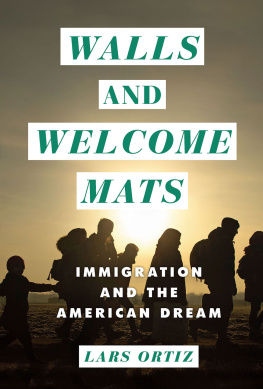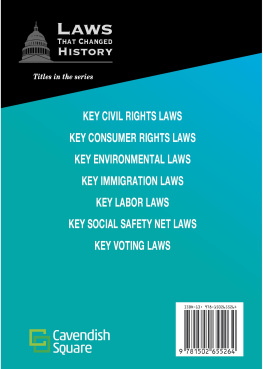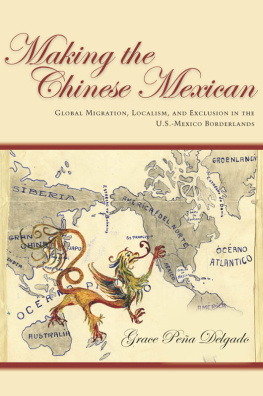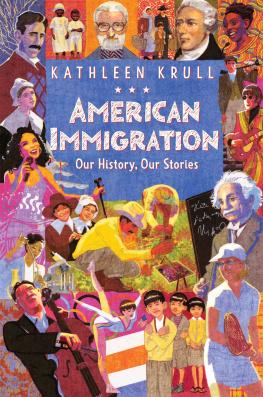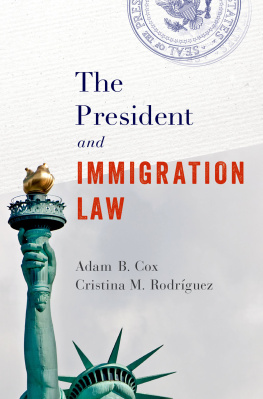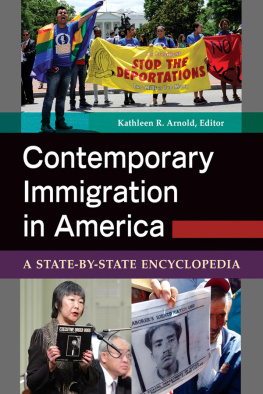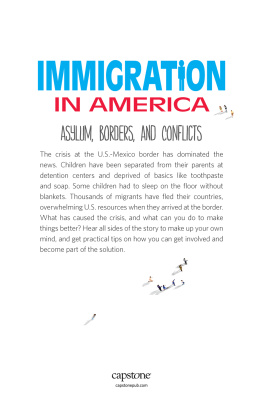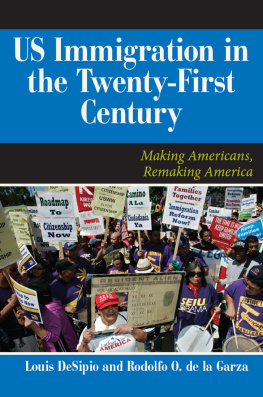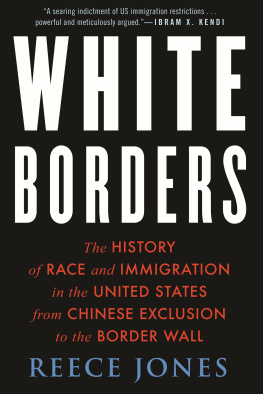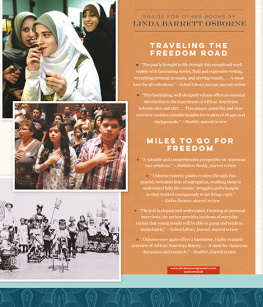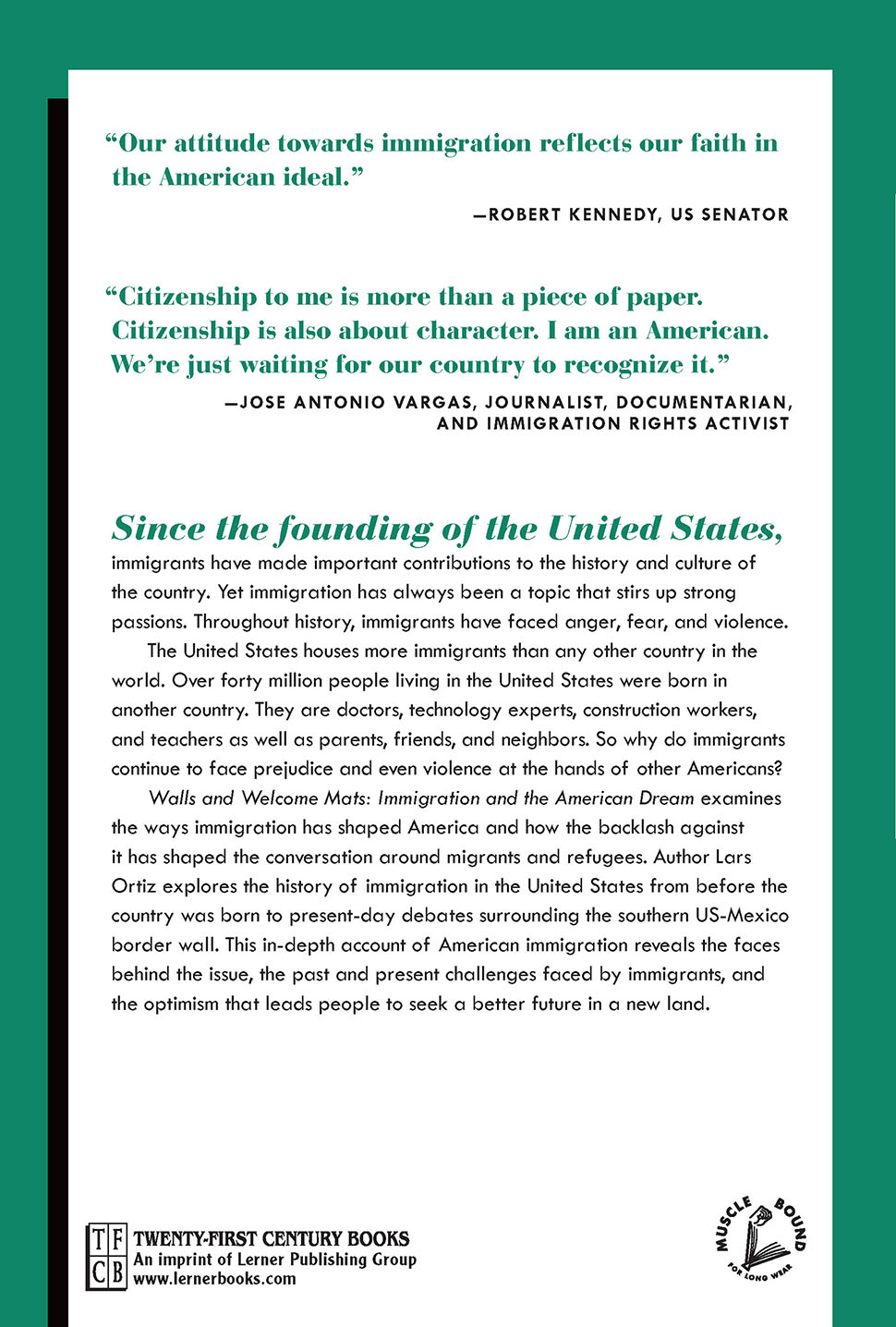

In loving memory of my mom, Talia. Thank you for welcoming me into your Dream.
Text copyright 2023 by Lars Ortiz
All rights reserved. International copyright secured. No part of this book may be reproduced, stored in a retrieval system, or transmitted in any form or by any meanselectronic, mechanical, photocopying, recording, or otherwisewithout the prior written permission of Lerner Publishing Group, Inc., except for the inclusion of brief quotations in an acknowledged review.
Twenty-First Century Books
An imprint of Lerner Publishing Group, Inc.
241 First Avenue North
Minneapolis, MN 55401 USA
For reading levels and more information, look up this title at www.lernerbooks.com .
Main body text set in Adobe Garamond Pro.
Typeface provided by Adobe Systems.
Library of Congress Cataloging-in-Publication Data
Names: Ortiz, Lars, 1984 author.
Title: Walls and welcome mats : immigration and the American dream / Lars Krogstad Ortiz.
Description: Minneapolis : Twenty-First Century Books, [2023] | Includes bibliographical references and index. | Audience: Ages 1318 | Audience: Grades 1012 | Summary: From hope for a better future to the backlash of xenophobia and nationalism, this book examines the history and current issues surrounding immigration in America Provided by publisher.
Identifiers: LCCN 2022006745 (print) | LCCN 2022006746 (ebook) | ISBN 9781728423999 (library binding) | ISBN 9781728445427 (ebook)
Subjects: LCSH: Emigration and immigrationJuvenile literature. | ImmigrantsUnited StatesJuvenile literature. | United StatesEmigration and immigrationJuvenile literature.
Classification: LCC JV6035 .O78 2023 (print) | LCC JV6035 (ebook) | DDC 304.8dc23/eng/20220325
LC record available at https://lccn.loc.gov/2022006745
LC ebook record available at https://lccn.loc.gov/2022006746
Manufactured in the United States of America
1-49222-49348-9/6/2022
Table of Contents
Chapter 1
American Story
Chapter 2
Out of Many, One
Chapter 3
Backlash: Part I
Chapter 4
Immigration in the Twenty-First Century
Chapter 5
Backlash: Part II
Chapter 6
Debunking Myths about Immigrants
Chapter 7
The Power of a Diverse Nation

Introduction
M igration, moving from one place to another, is common among humans and other animals. Through the study of early fossil records and modern genetic testing, scientists know that humans, or Homo sapiens , first lived in Africa about two hundred thousand years ago.
Scientists think that humans migrated to other parts of the globe around sixty-five thousand years ago. Some moved east, crossing Asia. Between fifteen thousand and twenty thousand years ago, or perhaps earlier, some ventured across what used to be a land bridge between modern-day Russia and Alaska. They probably traveled on foot or near the shoreline in boats. They continued to travel across North and South America and are likely the ancestors of Indigenous Americans.
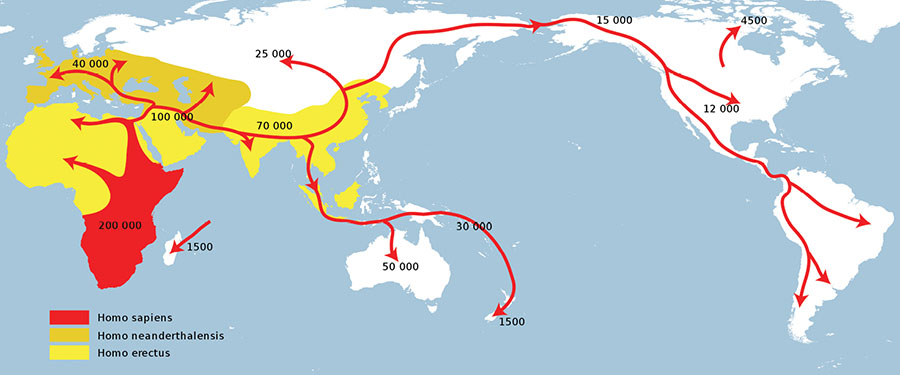
For many years, scientists and historians theorized that humans first reached the Americas via a land bridge that disappeared under the ocean long ago. This Bering Land Bridge would have been between modern-day Siberia and Alaska. That theory has been questioned recently due to new archeological discoveries and an acknowledgment of the oral histories of Indigenous Americans. A new theory has been proposed that humans sailed along the shores of the Pacific Ocean, subsisting on abundant kelp forests along the way.
The first Europeans in North America were Vikings, or seafarers from Scandinavia. More than one thousand years ago, they reached the lands that have now become Canada. In the 1500s, Spanish and French explorers came to North America in search of valuable natural resources, with a desire to colonize the land. Many British explorers and colonists followed. Around twenty million Indigenous people lived in North America at the time.
British colonists declared their independence from Great Britain in 1776 and formed the United States. The new nation was already a diverse one, with Indigenous peoples and immigrants from all over Europe calling this land their home. The United States quickly grew. By the mid-1800s, it was an economic powerhouse that attracted people from all over the globe. Immigrants from far and wide came to this New World for many reasons: to seek new opportunities, to escape religious or ethnic persecution, or to start a new life. They planted roots and contributed their own customs, languages, and cultures to the fabric of American society, helping create one of the most culturally diverse countries in the world.

In 1863, construction began on the first transcontinental railroad built in the United States. Historians estimate that fifteen thousand Chinese migrants helped build the railroads western half.
However, some citizens resented the influx of immigrants. As immigration to the United States increased, so did the backlash against immigrants. From individual acts of violence and threats to official government actions, such as the Chinese Exclusion Act of 1882, many US immigrants have had to endure unwelcoming treatment from other Americans.
Why are some Americans unwelcoming to new immigrants? Some fear people who are different. They see unfamiliar people as strange or scary, as an other. Some people fear that immigrants will take their jobs. Others blame immigrants for societys problems. Divisive words by politicians can increase a dislike or fear of people from other countries.
Some natural-born citizenspeople born in the United Statesclaim that immigrants are a drain on US resources and economy. This is untrue. Immigrants contribute greatly to the economy and the culture of the United States. Over the centuries, immigrants have built railways and highways; dug canals; and worked in mills, mines, and factories. Immigrants have always been the backbone of the US economy. From science and technology to the arts and politics, immigrants and the children of immigrants have proven to be some of the most ambitious and creative people in the country.
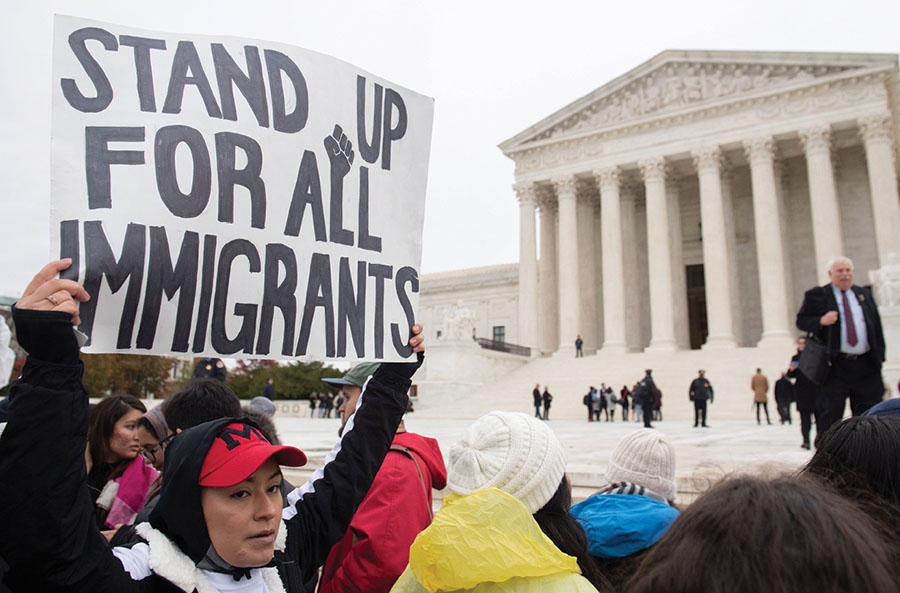
In 2019, immigration rights activists protested in front of the US Supreme Court as it heard arguments for ending the Deferred Action for Childhood Arrivals (DACA) program.
Almost every American has an immigration story to tell, whether they moved here yesterday or their ancestors arrived hundreds or even thousands of years ago. As we explore the history of immigration, think about your story. When did your journey begin? Why did your family move to where you live? When they arrived, did they encounter walls trying to stop them or welcome mats making them feel at home? If you dont already know the answers to these questions, it might be worth investigating your roots and ancestry by making a family tree, researching old photos and documents, interviewing relatives, or taking a DNA test.
Next page
